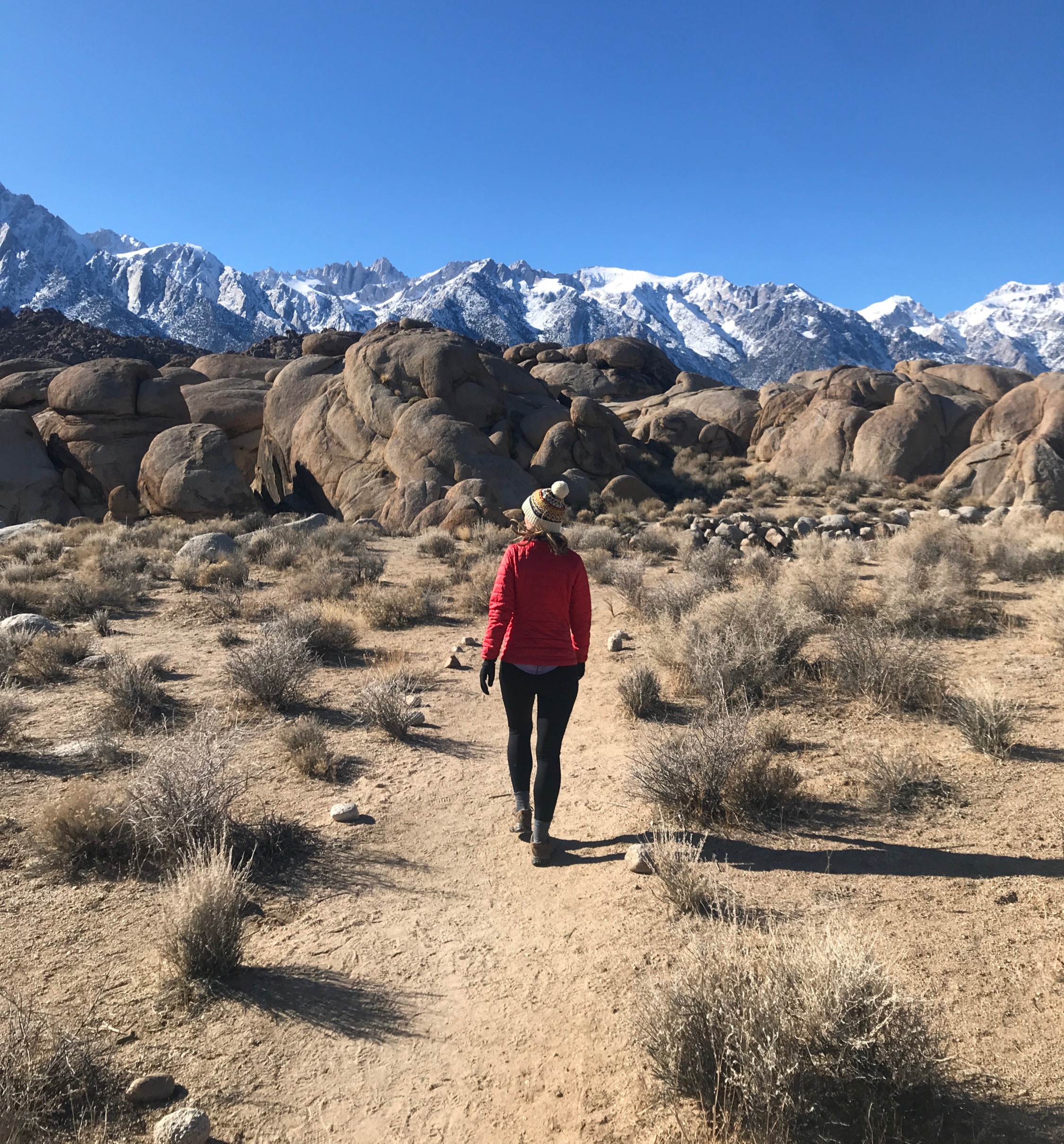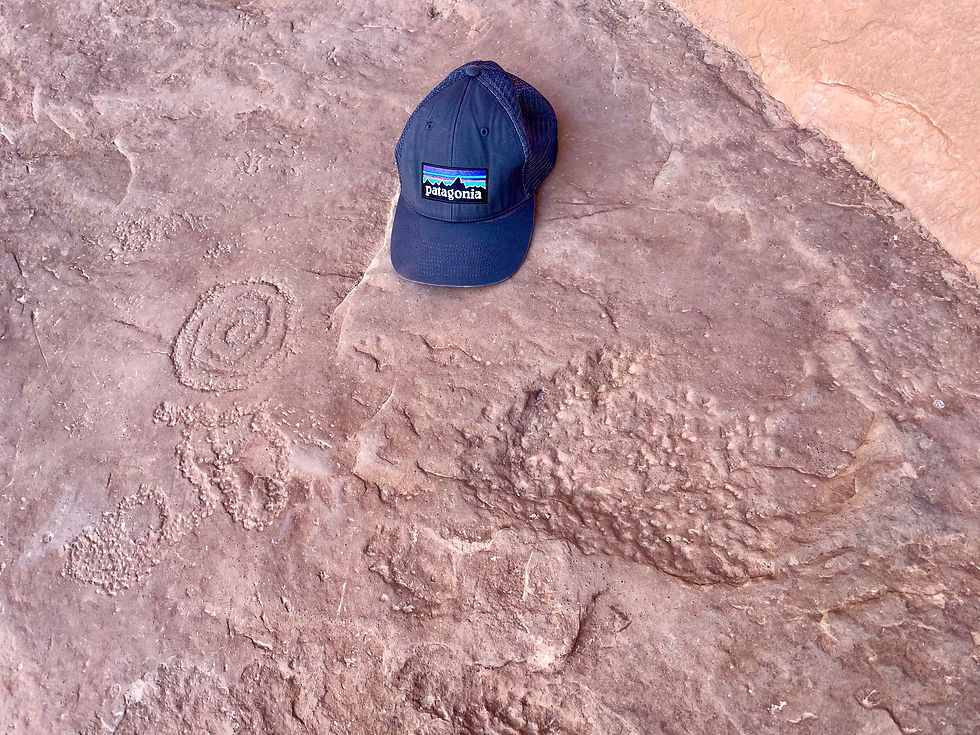Bears Ears National Monument Ruins & Artifacts
- Shana the Hiker

- May 13, 2021
- 5 min read
SAN JUAN COUNTY, SOUTHEAST UT
Bears Ears is a National Monument, located in southeast Utah. In case, like me, you are unsure of the difference between a national park and a national monument, here goes.
A national park protects land for its scenic, inspirational, educational, or recreational value. A national monument protects objects of historic, cultural, or scientific interest.
With more than 100,000 archaeological sites (whoa!), some as old as 13,000 years (double whoa!), it makes sense that Bears Ears was declared a national monument, but only as recently as Dec 2016.
The monument gets its name from a pair of buttes that stand out from the otherwise flat horizon and together look like, well, a bear's ears.
I spent a few days hiking in the park and exploring ruins. Here are some highlights:
Pueblo Ruins Loop
This is a relatively flat, easy hike, just one mile out, one mile back. The trail follows an off-road-vehicle trail for the first part, then turns into a choose-your-own adventure across a slickrock ridge where it's impossible to see where other hiking boots have gone before you. The most difficult part of the trail is finding the ruins you are looking for.
As you're hiking along, you come to a canyon on your left ...

And then ... YOU SEE IT! Let's zoom in a bit ...

Now, figuring out how to get down there is the next adventure. It's not difficult, it's just figuring out where to go so you are able to climb down. I was able to find what looked like trails in different areas and finally made my way over to the cliff dwellings. Check out this double-decker:

You can hike up to the lower level, but I have absolutely no idea how they got to the top level. Ladders up? Ropes to rappel down? I can't even imagine how they got all the rocks up there, or the water to make the mortar. Did they have pulleys back then? It still amazes me how people got things done in ancient times without the technology and machinery we have today.
Here's a view of some of the structures on the lower level:


The picture below FASCINATED me! The original wooden floor structure is still in tact. You can see how they used small logs (left to right in the pic) as floor joists, then smaller branches running the opposite direction for the floor boards. Over that is a layer of rock with mortar in between. The ceiling/floor is roughly five feet off the ground. So either people were really short or had strong knees from crouching all the time!

In these photos, you'll notice black stains on the rocks, which I've seen in other locations as well. I've been debating what causes these black marks. I've seen red cliffs with black streaks, and in several instances, the black part of the stone is wet from water trickling down from above. So I assumed water was creating the black stain.
I scoffed at allegations that the black stains were caused by soot, thinking the soot would have been worn away long ago from water and erosion.
However, in this pic below, it sure looks like the black stains are from soot! Do you see the remains of the wall at the bottom? And how that wall originally extended to the top of the cave, following the curve of the cave wall? Everything is black, except where the wall was, so wow, that sure looks like the stains are from smoke.

And then you come across ancient paint like these next two pics and I guess if these designs can last this many centuries, it isn't such a stretch to think smoke stains would last that long as well.


PS - although I've shared my (somewhat strong, haha) opinion about petroglyphs being graffiti in previous posts, these designs look like they have actual meaning or artistic value. Also, talk about quality paint! Their designs last thousands of years. I buy art at HomeGoods. Basically the same thing.
Cave Tower Ruins
This is one of the most complete two-story ruins I've seen so far. When you peak inside the doorway, you can see some of the wood used to build the second-story floor. Still blows my mind.

Another structure off to the side.

The pic below fascinated me. On the cave wall, just down from the tower structure, you can see designs etched into the wall. You can also see divots in the stone, called metates, that were used to grind grain. They are a little longer and wider than your hand.

Mule Canyon South and House On Fire
The highlight of the Mule Canyon South trail is this cluster of well-preserved structures, topped by an incredible red rock formation that makes it look like the house is on fire.

I hiked a total of 6.28 miles, climbing up and along the ridge on the way out, which passed by a few more ruins, then back down into the canyon to follow the gully back to the car.
Butler Wash Ruins
This hike ends at a viewpoint overlooking a canyon with structures built into the layers of rock. It's hard to make out in this picture, but there are structures along most of those ridges.

Monarch Cave
I loved this spot! The structures built into this alcove were impressive, built like a fortress into the side of the cliff. Also, note the black streaks on the ridge. Going back to the pictures from the Pueblo Ruins hike above, these just don't look like they were created from smoke. What do you think?

Here's a closer view of the fortress. See what I mean? It looks like castle walls with multiple levels.

And closer yet. It looks like these structures were a minimum of three stories tall, built on a sloped rock outcropping. The engineering behind this is pretty incredible.

Behind the structures is a cave that looks like it goes deep into the mountain. The area was roped off, so I respected the limits and stayed back, although I was dying to go check it out.

From what I read online, the inhabitants left rather abruptly about 750 years ago, likely due to a major drought. They left a lot of things behind. Here is a metate, littered with corn cobs. Incredible.

Here are a few broken pottery pieces.

More metates, similar to those at Cave tower ruins, but coupled with bowl-shaped indentations.

A swirl design etched in the rock to the left of my hat (placed there for perspective) plus below it a serpent like design. Below and to the right of my hat are a series of pitted indentations. I can't find online what this would have been used for. Send me a note if you know!







Comments